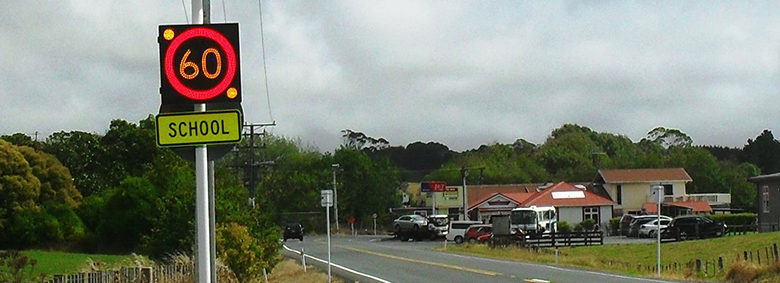Taking a Safe System approach to improvements

Two programmes of work have recently been announced that help the Transport Agency and other road controlling authorities (RCAs) better target time and resources to where they’ll make the biggest difference to safety.
The Transport Agency published information outlining improvements made or being planned to improve safety at many of New Zealand’s 100 highest-risk intersections.
The high-risk intersection list was finalised in March with input from local authorities, by using methodology outlined in the High Risk Intersection Guide. The guide - developed in 2013 - provides a nationally-consistent method of assessing crash data to identify intersection crash risks. It also provides a nationally consistent application of proven countermeasures.
Since developing the draft list last year, progress on improving safety at these intersections has been good. Safety improvements have already been completed at 22 of the 100 intersections; plans have been completed for upgrading 47 and are in development for a further 18, with measures under investigation for the remaining 13.
Transport Agency Road Safety Director Ernst Zollner said the work was part of the Government’s Safer Journeys Action Plan, and the list of high-risk intersections would be updated regularly to ensure that safety improvements continue to be targeted to where they can most effectively reduce crashes, save lives and prevent injuries.
In March the Safer journeys for rural schools guide, was also published. It outlines a comprehensive set of possible Safe System solutions for schools and RCAs to assess (and if necessary improve) road safety risk for rural schools.
The guide is part of our Rural Schools Road Safety Programme, which is a series of initiatives to improve safety outside rural schools. There are three parts to the programme:
In addition to this, the Safer journeys for schools – guidelines for school communities companion guide is targeted to parents, school staff and boards of trustees to help them improve road safety in their local community.
Work has also begun on a Safer journeys for urban schools guide which will be published by the middle of this year. This will enable the highest risk school environments in both urban and rural areas to be prioritised in tandem.
Director Road Safety Ernst Zollner said: ‘Under a Safe System we work to minimise the risk of future crashes and the severity of crashes if they do occur. Identifying risk in a consistent way is the first step toward being able to address it, which is why the High Risk Intersection Guide and the Safer Journeys for Rural Schools Guide are valuable tools.’
‘We focus on improving areas that have the highest risk of fatal and serious crashes occurring, rather than responding reactively. To do this we calculate which areas have the highest risk by considering the road features, traffic volumes, mix of users and vehicles, and speed; as well as the crashes and near misses that have occurred at a site or along a road.’
‘While every crash is tragic, each individual crash does not necessarily mean that the particular section of road where it occurred requires improvement. But each crash does act as evidence to be considered alongside all the other information we have when deciding where to make road safety improvements.’